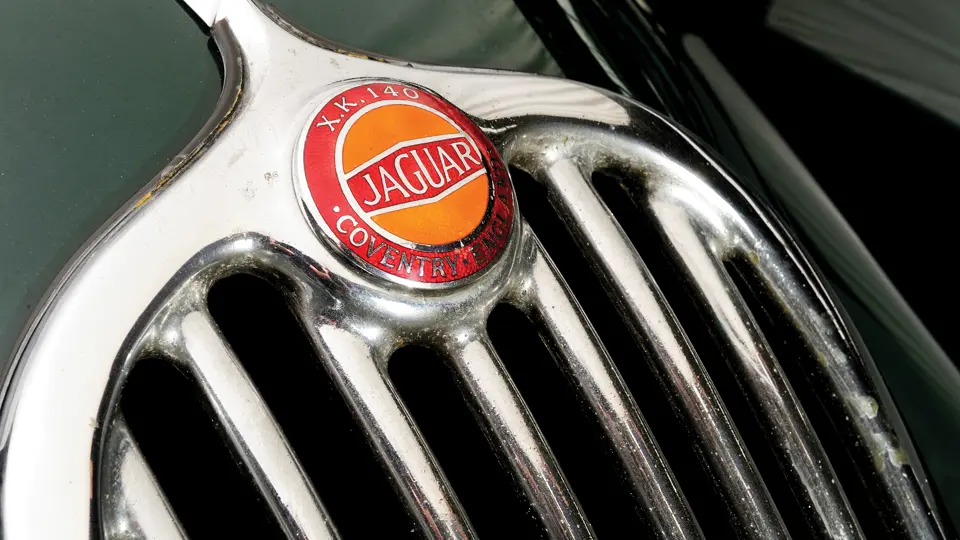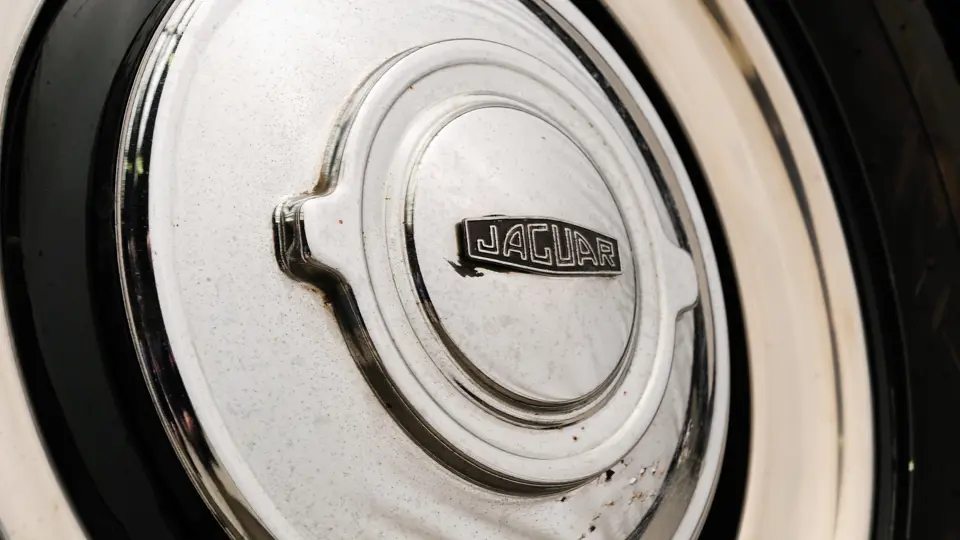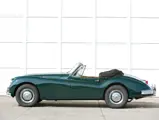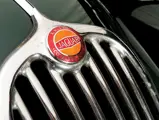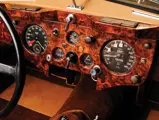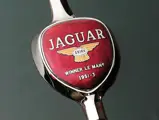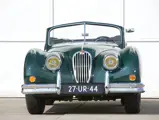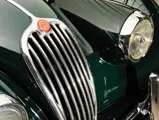210 bhp, 3,442 cc DOHC inline six-cylinder engine with two SU carburettors, four-speed manual gearbox, independent front suspension with coil springs, double wishbones, and anti-roll bar, rigid rear axle with semi-elliptic leaf springs, and four-wheel hydraulic drum brakes. Wheelbase: 2,591 mm
The famous Jaguar marque began life in 1922 as the Swallow Sidecar Company, which was formed by William Walmsley and William Lyons. Lyons believed that the names of animals and birds conveyed an image of speed and grace and were ideal for a car manufacturer. In 1935, the company was floated as SS Cars Ltd. Following the war, the company was reorganised, the name SS was dropped for obvious reasons, and William Lyons’ cars would now be sold under the name Jaguar.
Jaguar’s XK Series were produced from 1948 until 1961 in three guises, the XK120, the XK140 and the XK150. The term “XK” evolved from the name of an engine, and the “120” of the XK120 represented the car’s maximum speed, which was a figure that was, in fact, conservative. When the XK120 was launched in October 1948, it was lauded as one of the finest high performance sports cars ever to be manufactured in Britain. It was an immediate success in competition.
The XK140 was released in autumn of 1954, and it was offered with the same body styles as its predecessor: the drophead, the roadster, and the fixed head coupé. Similar in appearance to the 120, the 140 had larger bumpers, a new grille, and a chrome stripe along the bonnet, amongst other changes. The standard engine produced 190 brake horsepower, whilst the special equipment, or SE, version with the C-Type cylinder head produced 210 brake horsepower. The XK140 also handled better than the 120, thanks to better damping and the fact that the engine had been mounted further forward in the chassis. The XK140 could cruise all day at up to 135 mph, and very few of the world’s most expensive cars were quicker than it.
The Jaguar XK140 SE Drophead Coupé presented here is in good condition throughout. It was manufactured on 15 November 1955 and dispatched early the following January through Charles Hornburg, of Los Angeles, California, as a left-hand drive example. It was originally finished in Pastel Green with a Biscuit interior that had Suede Green piping, but it has since been refinished in the elegant combination of British Racing Green with tan hides. The odometer is currently showing 38,210 miles, which are believed to have accumulated since it was restored. As a special equipment version, designated SE in the UK and MC in North America, it has been fitted with the C-Type cylinder head, heavier torsion bars, and twin exhausts.
The XKs are legendary on and off the track, and this Jaguar is certainly a fine example of the pedigree.

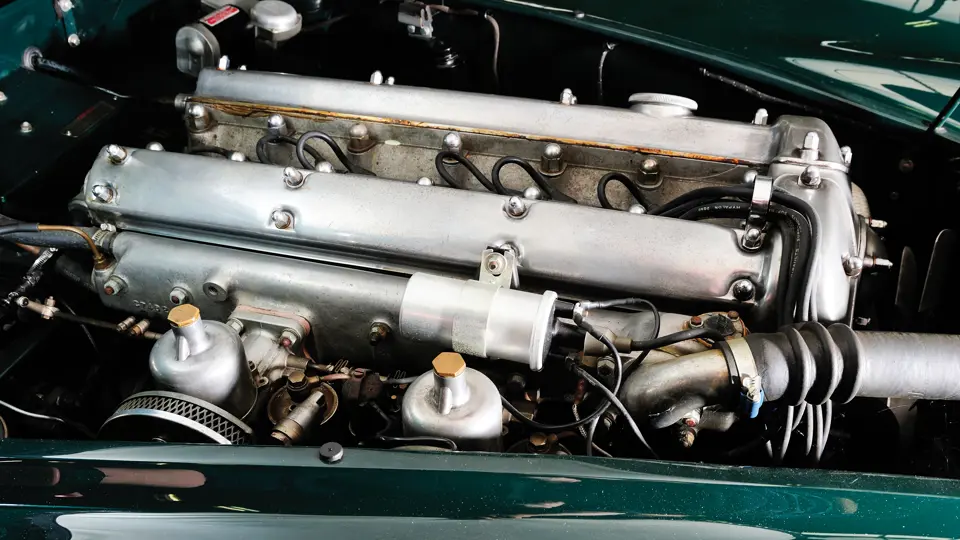


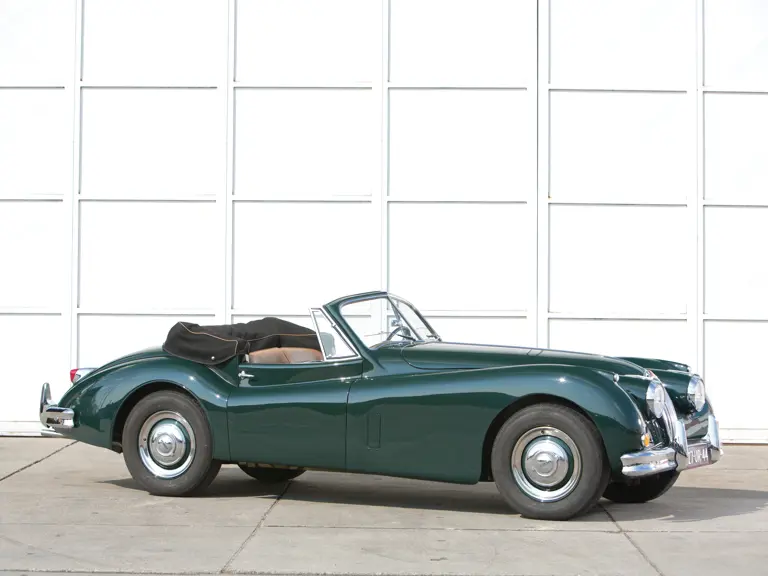
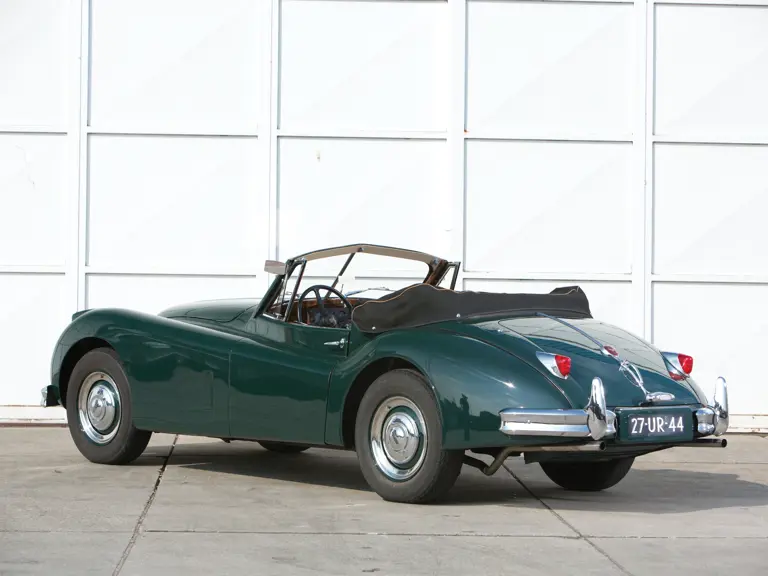

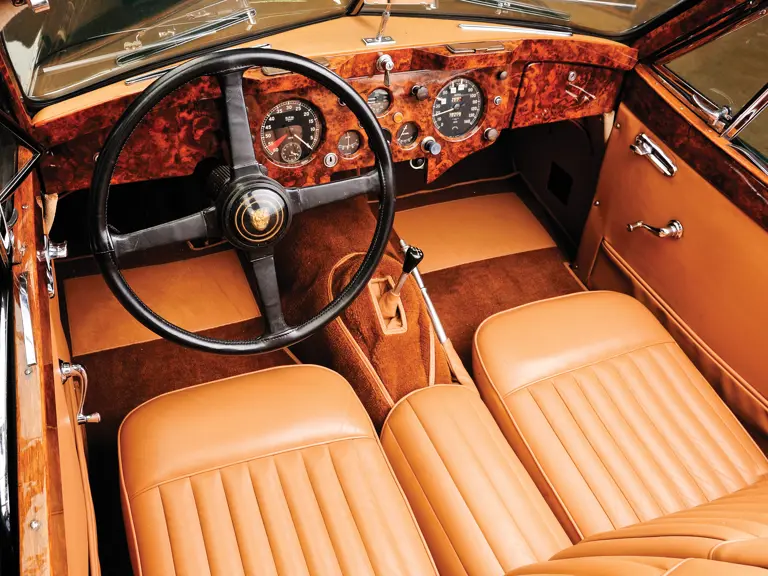
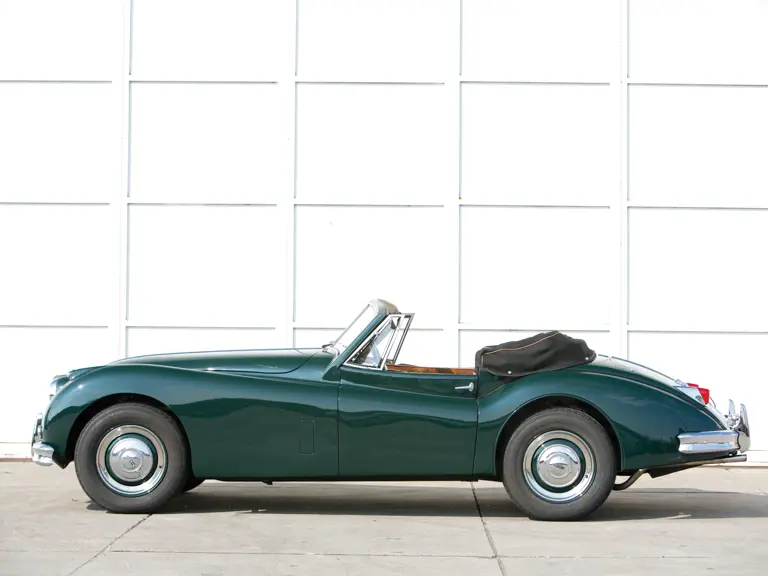
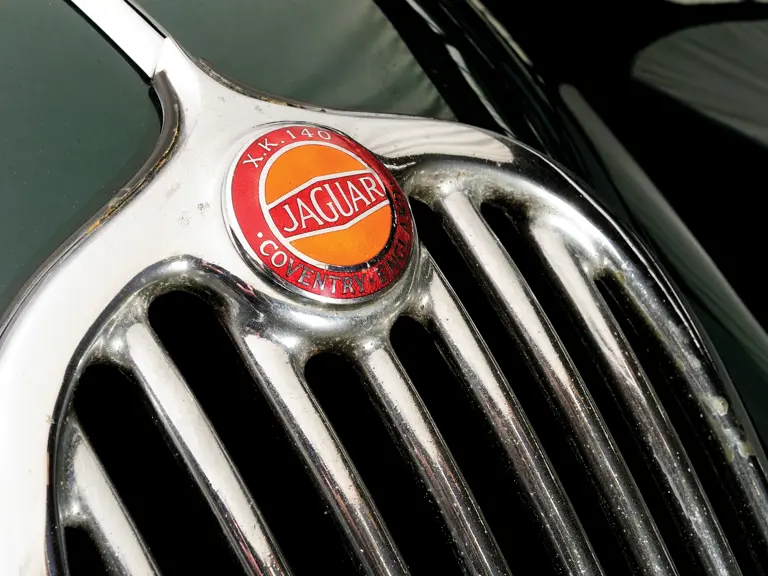
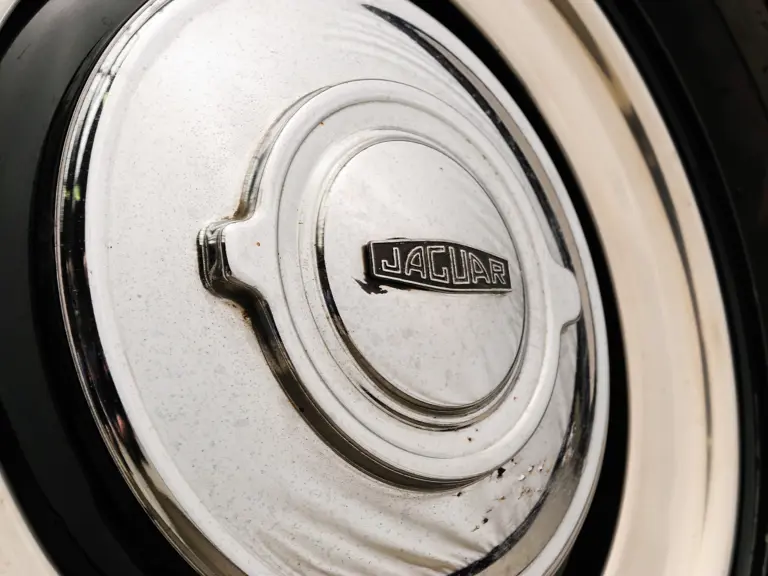
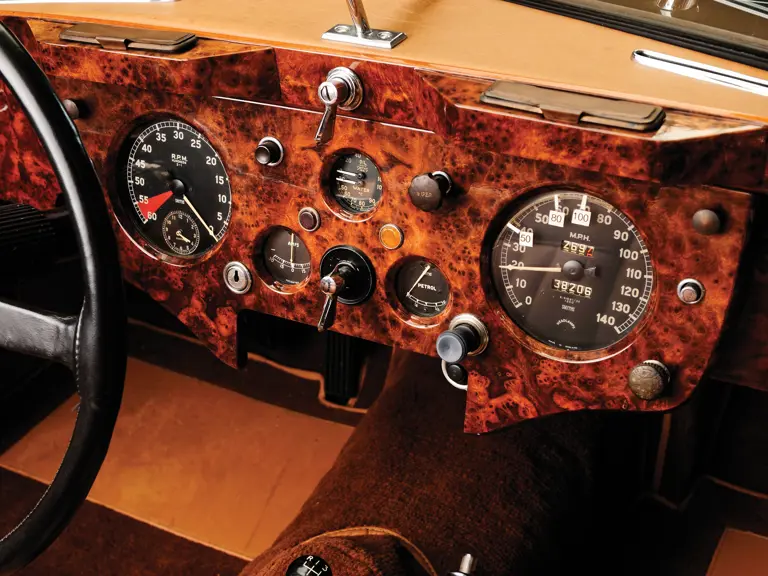
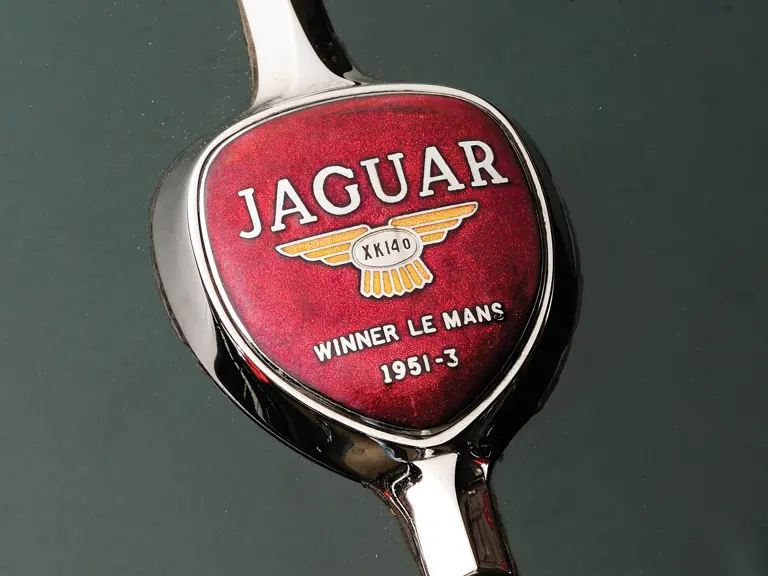
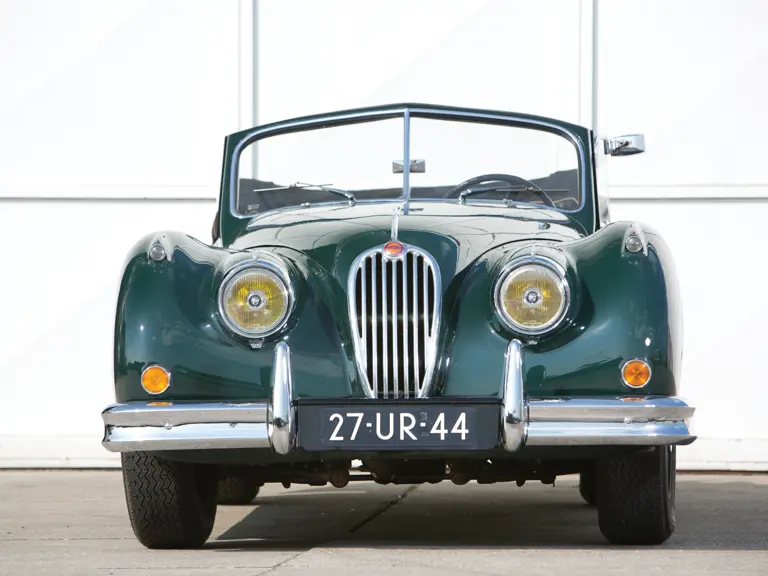
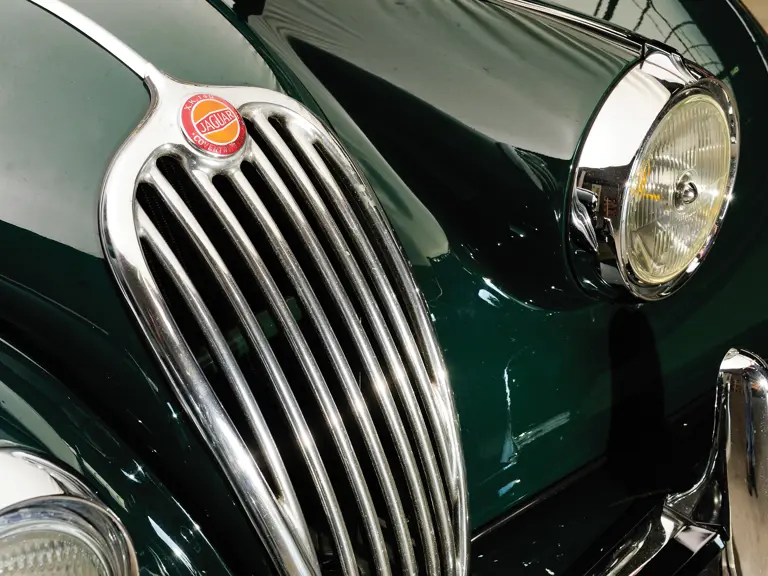
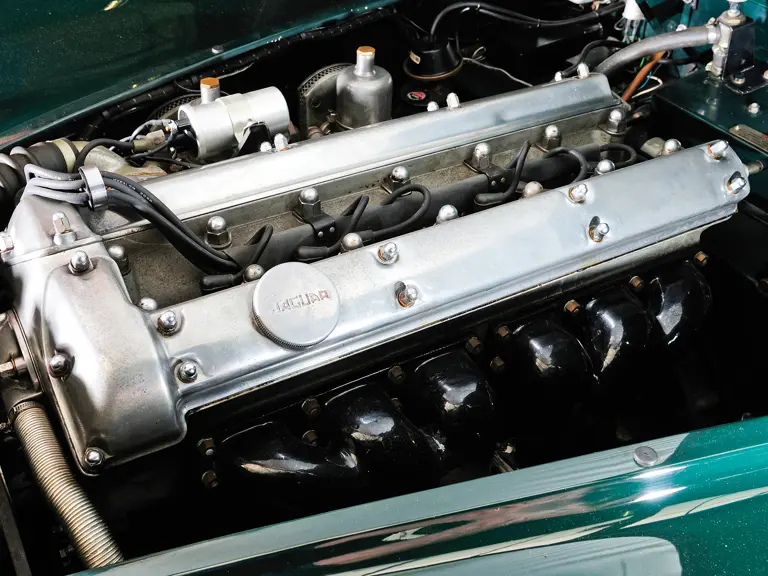
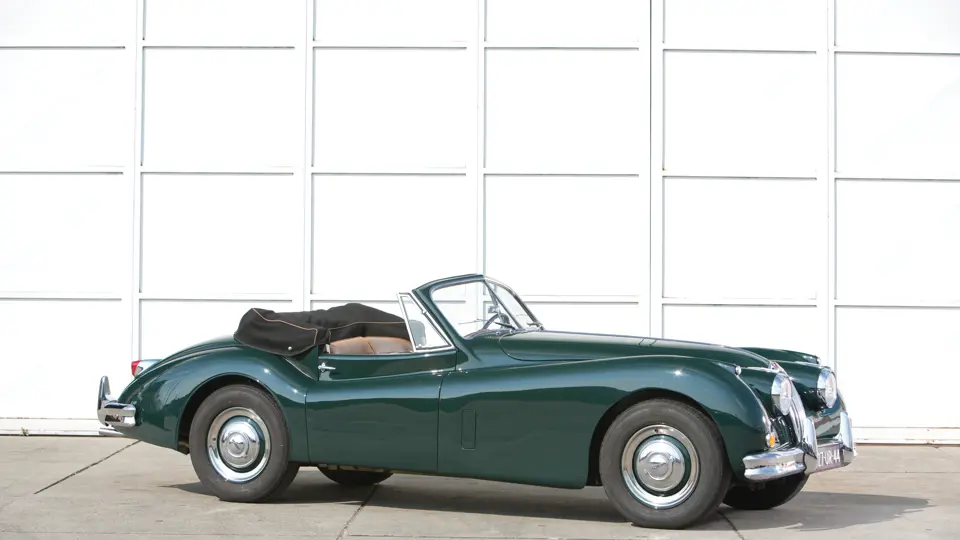
 | London, United Kingdom
| London, United Kingdom

